#these gifs came out so low quality :( i dont know what happened
Explore tagged Tumblr posts
Photo
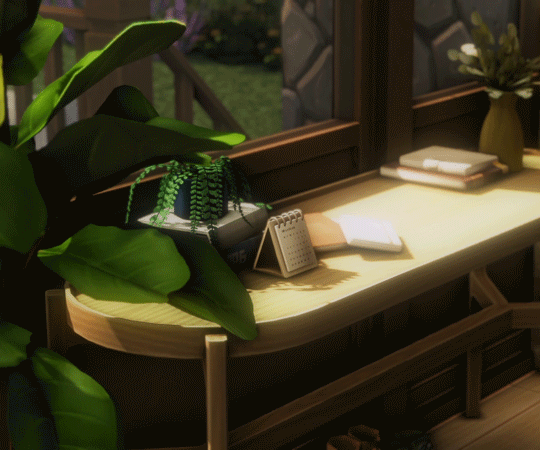

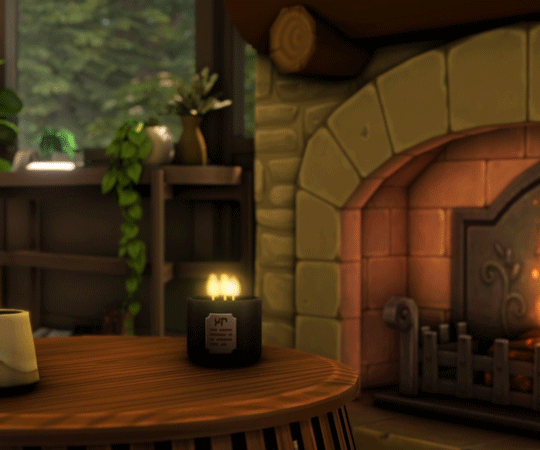
#ts4#sims 4#ts4 gameplay#sims 4 gameplay#gif#hargrove-weston#these gifs came out so low quality :( i dont know what happened#strangling photoshop like i'm homer simpson
59 notes
·
View notes
Note
could we get nsfw/kink hcs for nami, nico robin, hancock, and perona with a dom!male s/o? please and thank you!!!
OMG I WROTE EVERYTHING THEN I GOT DELETED SORRY IF THIS IS LOW QUALITY I LOST MOTIVATION
VARIOUS ONE PEICE WOMEN X MALE!READER LETS GET INTO ITTT
——————————————————————————
NAMI

- HATES doing it in public or anywhere not private. She just doesn’t like the fact she could get caught at any moment!
- TIT JOBSSS
- She loves rubbing your crotch under the kitchen table at dinner because to tease you!
- Doesn’t do quickies, if your gonna do it with her ya gotta do it right!
- Teases you when giving head because she loves when you get dominant and shove your shaft down her throat
- When you give her hickies she always does a little pose that shows the love letters you left on her skin
- Scratches your back when you get too rough with her as revenge. You don’t notice until later though
Scenario:
“(NAME) (NAME) How did you get those scars on your back?” “Mm? Scars?” You turn to see thin but not deep cuts starting from your shoulder blades leading down to your waist. A “💢” appears on your head. “I fought an orange haired tiger…a very bratty one too..I’ll get revenge though~” “WOOWWWW” Chopper exclaimed. (Innocent boy🥹) “wait but how come they look fresh and I haven’t seen them since now?” “Uhhhhhhh”
——————————————————————————
ROBIN

- You’d think she’d be a sub!top right? NOT ON (Name)’s WATCH
- Unlike Nami she loves the thrill of doing it in public and the feeling of knowing anyone can see.
- Into food play :0
- Like she’ll get whipped cream on your dick and slurp it off EVEN her favorite chocolate or the desserts Sanji makes. (Much to his disarray)
- Loves cowgirl position
- Leaves hickeys on your neck
- SUPRISINGLY (not really) CAN KEEP HER COMPOSURE WHEN DOING YOU NOT BEHIND CLOSED DOORS
- Sometimes will even cockwarm you in a corner of the deck.
Scenario :
“ROBIN SWANNN!~ LET ME MAKE YOU ANOTHER DRINK SO YOU DONT DIE OF THIRST!~” Sanji said practically shouting. “That’s … great Sanji.. thank you.” Robin replied. “ILL BE RIGHT BACK MY LADY!~” Sanji skipped away. “Mm? Your pussy got tighter did you really get turned on by almost getting caught?” “I just got Mm~ scared is all” “Mmm Robin can I start moving yet your pussy is gonna snap me in ngh~ half” “HER WHAT IS GONNA WHAT!?” Sanji screamed furiously from the kitchen. “NOTHING!”
——————————————————————————
PERONA

- HAS THE CUTEST MOANS EVER OMFGG
- The first time y’all did it Perona had to explain to Mihawk through the crack of her door.
- Your cock was still buried deep inside her as she talked to him LOLLL
- DONT OVER STIMULATE HER IT WILL ACCIDENTALLY ACTIVATE HER DEVIL FRUIT 97 PERCENT OF THE TIME
- LOVES DOGGY STYLE OR FACE DOWN AND ASS UP <3
- Wakes you up with blowjobs almost everyday because she usually wakes up before you.
Scenario:
“Ah!~ (Name)…slow~ DOWN!..~” Slapping noises filled the room. 3 of her ghost passed through your body and the thrust came to a stop. “(Name)?” She looked up to see you looming over her with a dark face. “Im such a loser how did I end up with a girl like you…?” “AH! (Name)! IM SO SORRY!” She retracted the ghost. “P..Perona?” Hee hand raised up to give you a hard bonk to the head. “I TOLD YOU TO SLOW DOWN NOW LOOK WHAT HAPPENED!” “Oops..”
——————————————————————————
Boa Hancock

- HUUUGE BREEDING KINK SHES SO INTO THE THOUGHT OF HAVINGp YOUR CHILDREN
- Here she thought no one could best Luffy 😭
- Is very VERY romantic
- Loves the butterfly position, she just loves looking into your eyes as you 2 make love!
- She is the only who gives hickies because her skin needs to “Stay smooth” she said. ;(
- Doesn’t even let her sisters look at your handsome FACE! <3
- She thinks almost every look you give her means your in “the mood”~ 😏
Scenario:
“Ooh (Name)!~” She called out wait for you to show up. “Hey my love, what’s up?” “I couldn’t help but think about how you stared at me during dinner so I prepared a little something for us!~” She opened the door to a dim room lit with pink and red candles. Red rose petals covered the bed in a heart shape. “Wow~ all this for me?” You left Boa off her feet. “Of course after I could read you like a book!~” You started walking over to the romantically covered bed. All you could think about was you simply wanted her to pass the salt during dinner.
- YOU STILL FUCKED HER SILLY THOUGH LOL
——————————————————————————
TY FOR THE REQUEST ANNON!!
HERE ARE SOME COOL GIFS :p




OK HAVE A GOOD DAY :D
19 notes
·
View notes
Text
Relax (Steve Rogers x Nonbinary!reader)

“Imagine taking care of Steve after a particularly difficult mission.”
Relax -- (Steve Rogers x Nonbinary!reader)
Description: Steve comes back from a bad mission, and the reader (with powers similar to Jasper from Twilight) has to help him relax.
Warning: some depressing stuff from Steve and some vague mentions of a failed mission including fire and kids or something. Probably a couple cuss words, I dont remember.
Genre: general fluff, but it starts out kinda angsty, hurt/comfort
Pairing: Hurt!Steve Rogers (Captain America) x non gender specific!reader
A/N: once again, I wrote this when I was, what, ten? So, like... don't judge. Or do, I don't really care, actually. Gif isn't mine, y'all should know that. I finally managed to post it onto the right page, be proud. I'm still leaving it up over there, though, cause I'm too lazy to actually delete it fully. Anyway...
Words without A/N: 1942
Masterlist
<—————————————>
He hadn't been able to save all of them. He should have been able to save all of them. There had been children, babies even. And he hadn't been able to save them. He hadn't been able to get them all out of the building in time.
It had been a very long, and very hard mission. He had known it would be from the start, but he hadn't realized just how mentally damaging it would've been. He could still hear the screams of the victims still trapped inside of the burning building that he should've been able to save.
All he could think about was the people who had lost their lives, and the people who had lost loved ones, as he trudged into the elevator that would take him to his floor of the Avengers Tower. He didn't even bother to go to the debriefing that was held after the mission, he just headed towards his room in some desperate attempt to escape his pain and grief and stress.
As he made his first step off of the elevator on his floor, he vaguely registered someone speaking to him.
"Mistah Rogers? Are you alright? Well, no, uh, of course you're not alright. I can feel what happened. Oh, I'm so sorry, Mistah Rogers."
The sweet, slanted voice of (name) (last name) broke through the somber fog that had seemed to wrap itself around his mind. He usually rather enjoyed the empath's ramblings, but right now their reading his emotions was not good. He had to keep up his hero facade, if he didn't, he might as well be walking away from himself. So in an attempt to get away from them, he just grunted and kept walking.
"Mistah Rogers? Hey, did you hear me?"
'Just go away, kid,' he thought to himself. He felt his emotional support beams snap just a moment before he rounded on the empath.
"You know, for somebody who has the literal ability to read peoples feelings and emotions, you sure can't tell when your presence isn't wanted, can you?!" He growled, his voice dangerously low. He didn't mean that, of course, he just couldn't deal with people right now. He saw a flash of hurt cut across their eyes at his words, but it quickly demolished and reformed into some odd form of understanding.
"Oh I'm... I'm sorry–I'll, uh, I'll just g-go now," they replied in a stuttered mumble, before scurrying towards the elevator. As he watched their heel disappear behind the metal doors, he almost reached out to tell them he didn't mean it; but the door was too fast, and before the words could escape his lips, the (your hair color) haired empath was gone from sight.
He let out an irritated sigh and ran a hand over his face, before about-facing, and continuing the trek to his room.
The second he kicked the door closed behind him, he was taking off his clothing and slipping into a pair of baggy sweat pants, and belly-flopping down onto his too-soft bed.
He just laid there a moment, feeling himself slip into that beautifully fuzzy haze of not-full-consciousness and not full sleep. Focusing on that and not the ache in his shoulders and back or the sound of screaming that still reverberating in his mind was probably why he didn't notice the soft knock that came to his door, or the click of the hinges as it was pushed open slightly to reveal the same (hair color) haired, (eye color) eyed person that he had nearly shouted at in the hallway only a few moments before. He should have been ashamed of his lack of vigilance, but in all honestly, thinking back on it later he would probably be glad he hadn't.
The empath carried a small bag that held several different items in it. Most of which Steve would deny ever using if he was ever asked outright. Everything from essential oils to lavender scented bath soaps were held in that bag.
~~~~~~~
They knew that Stevens previous explosion was not really aimed at them, he was only stressed and in desperate need of some well deserved R&R. They also knew that what they were about to do could get them yelled at by the super soldier, but they couldn't not help him. Part of being an empath was feeling someone else's pain as if it were one's own, and right now, all the pain and anger and grief that he felt was also within them. So their doing this for him was to help them almost as much.
Hesitantly, they reached out a trembling hand and placed it upon his bare shoulder. At the initial contact he stiffened and sharply inhaled, but, as they released some of their power, he immediately began to calm down.
Another part of their power was the ability to manipulate other peoples emotions. It may not have been the coolest power, but, in times like this, they found it rather useful.
They removed their hand from his shoulder just long enough to rub some essential oils and lotions onto their hands, before replacing them on his shoulder and softly beginning to massage away the tension. His muscles were still so wound up from the mission that it took them a few moments to get through to his sore flesh, but the moment they did, he let out a small breathy groan that brought a small smile to their lips.
They worked their way all the way across his broad shoulders, and then down his back, all the way to the band of his low-riding sweatpants and back up to repeat the motion again in backwards order. Switching between soft kneading and harder circles with the heel of their small hand, continuing for the better part of an hour until his muscles were back to their previous limber flexibility.
They had noted some twenty minutes before that his groans and sighs of appreciation had morphed into soft snores and the rapid flow of rabid emotions that had cut though his consciousness before were now down to a minimum.
'Good,' they thought, 'its working.'
But now that they needed him to move, it could be possibly problematic. Gently, they moved up to his face and gingerly placed a pale hand upon it, shaking him slightly to wake him and whispered quietly.
"Hey, Mistah Rogers... he, I need you to roll over for me... Do you think you can, love?"
His beautiful blue eyes opened just a slit to see their face and he let out a rather loud, guttural moan as he pushed himself to roll onto his back, his tired muscles not quite awake enough to push himself up with much grace, as he just kind of flopped over, one arm layed across his abdomen the other still trapped under his body. They gently pulled his arm from under his body, and layed the other straight beside him, before re-applying more lotions and returning to message his front side.
Again, they started at one shoulder and worked their way across to the other, then worked their way down his chest and stomach, then back up before going to his bicep and massaging down his arm, all the way to his hand, going back up, then repeating the action with his other arm.
They left him for a moment to go to his bathroom and start the bath. Taking the correct products from their bag, they began pouring in generous amounts of bath salts and bubbles as it filled.
They quickly went back into his bedroom and softly shook him back awake, careful not to be too harsh.
"Hey, there, Mistah Rogers, come on, I've got a bath running for you."
His eyes opened ever so slightly yet again to take in their face, and process what the (eye colored) eyed empath had said. With a groan, he pushed himself to a sitting position, and allowed them to pull him into the bathroom. Once there, they turned to him expectantly before blushing heavily and turning their back to him so he could slip out of his sweats. He was far too tired to be very embarrassed at the happenings as he gingerly climbed into the bath, using the bubbles as a sort of blanket to hide his, heh, "intimate area" from view.
As soon as they knew he was covered decently, they turned back with a washcloth and poured some soap onto it, scrubbing the foam into the rag to make it sudsy.
They bent and sat on their knees at the side of the tub, leaning forward and not hesitating to begin washing him with the utmost care.
~~~~~~~
The feeling of their rag covered hand scouring over his body gave him chills, he hadn't felt so well taken care of like this since before the serum, when his oldest freind would take care of him when he was sick. And, as much as he hated to admit it, it felt amazing. To be vulnerable to someone like this had an almost orgasmic quality to it. He let his head drop back onto the edge of the tub and closed his eyes, allowing himself to fully relax against their adept hands as they swept his body.
He felt the soft rag cross his shoulders, then down his arms, then across his toned stomach, stopping before their hands dipped bellow the belt line and went down his legs, all the way down to his feet.
He felt as their unclothed hand moved down his arm and gently grabbed his wrist, pulling his hand above the waters bubbly surface and setting the wash rag in his hand. Wordlessly, they gestured to his groin area, asking him to wash himself while they left to get some dry towels.
He did as they had silently asked, and they returned quickly with two large, fluffy, white towels to dry him with. The empath helped him stand and step out of the bathtub, handing him one of the towels to dry his front while they patted dry his back.
He stood as still as he could on limbs that felt like gelatin as they finished drying him and helped him back into his sweat pants. Leading him back to his bed. They pulled back the bed spread and helped him lie down in a comfortable position.
They stayed like that for a few moment, just watching each other, before (name) smiled a small smile, squeezed his hand, and turned to leave.
But their hand didn't leave his.
He held them back until they looked back down at him with curious eyes.
"Thank you," they said simply. "and... call me Steve."
Their answer was just a kind smile and another soft squeeze to his hand. They tried yet again to move away from him, but again was stopped by him not releasing their hand. A small blush creeped onto his cheeks as he asked quietly:
"Would you, uh, would, would you mind staying with me, for tonight?" He quietly questioned.
Yet again their responding smile answered his question as they crawled down into the bed beside him. He turned towards the empath and they pulled him towards them, resting his head on their chest and reaching up to toy with his still slightly wet blonde hair.
It didn't take long for him to fall asleep in their embrace, and not much longer for them to follow suit. Their hand still buried in his soft hair.
Let's just say that it was the best night of sleep either of them had had in a very long time.
#Steve Rogers x nonbinary!reader#Steve Rogers x reader#Captain America x nonbinary!reader#Captain America x reader#Fluff#Captain America fluff#Steve Rogers fluff#Captain America hurt/comfort#Steve Rogers hurt/comfort#Cute#Angsty fluff#Steve's a cute boi#Reader is from boston or something#apperantly#Is there enough tags yet?#I still cant believe I managed to post this to the wrong bloody account#Holy cheesecake am I stupid#I think this is enough tags by now#Oh#Reader has a really weird thing with crotches apperantly#Thats all#Relax
23 notes
·
View notes
Text
Phantom Dragon
Imagine being on of the things/people that make Ikebukuro so special.
Warnings: It's me, so swearing. I'm a slut for Light Fury's, sorry. And being obsessed with something (for me) means crossing it over with almost every fandom I know.

There's so much that makes Ikeburkuro stand out from other cities. Sure it might not be the biggest or most populated city in the world, but you know what they say, "Quality over quantity."
It's the people that make this city so unique: you've got The Headless Rider, Saika (who some still argue is just a myth), the strongest man in the world Ikebukuro, everyone's most hated favorite information broker, and heck even some of the gangs help make the city widely infamous.
And then there's you.

You only came recently.
Some time after that big fight that landed Masaomi in the Hospital.
You hadn't arrived there by normal means- traveling internationally involves medical records and documentation in order to make sure that, health wise, you were okay to travel to another country. BUT because you aren't completely human, and have a little somthin' else, any form of testing might come up or appear outside the normal ranges for a human being (little things like taking your temperature might be alarming to medical professionals).
So you got there by paying someone to stow you away on a boat. Unfortunately getting somewhere by shifty means, ment you had to hire some shifty people, and that ment they couldn't always be trusted to keep their mouths shut - especially after they thought they saw something.
That being said, of course Izaya knew about you the day you arrived.
Correction
He knew of you, but not about you. He only knew what he had been told and that only made his interest in you deepen.
"Someone's arrived in Ikebukuro who might add some extra weight to the scale- maybe not on one side or the other, but perhaps in a new direction."
Oh color him interested.
For about a month or so, you were able to live quietly and without being seen while you were... *cough cough* having fun being yo majestic dragon shifting self.

The first sighting happened on one of the days when Celty was being hunted down ceaselessly.
Someone got their hands on one of those giant guns that shoots out a big net, and they had the mind to try and use it on Celty.
Let's just say their aim was off
And you, in all your curious glory wondering why so many thugish-looking bikers were ganging up on one woman, were gliding around kinda low.
Then it happened. You were shot down, but at first no one could see you and for a second they thought the net was faulty.
But Celty knew otherwise.
She was able to use her powers to help you get away without being seen by the people in your immediate vicinity, but she could do nothing about the people in the surrounding buildings.
So of course someone had seen you and gotten video evidence before you seemed to disappear into thin air.

It took only a few hours for the footage to go viral - with some people stoked to see that such a creature existed in their home town, while others were skeptical of the video being real.
Izaya was giddy as fuck, because this must be what that one guy was talking about.
Shinra wasn't sure if it was real, but then again his girlfriend is a Dullahan so why the hell not?
Shizuo was there when Celty set you free.
Anri was a bit more on the indifferent side, she wasn't sure how she felt about the video. If it was fake it didnt change a thing, but what if it was real? Her school girl mind could only imagine.
Masaomi cracked jokes about there being a princess in town, and that was why there was a dragon here.
And as always Mikado was a bit late to the party.
Let's talk about the people who know about you- and I'm not talking about people who saw the video, no. I mean people who looked at you and just got a sixth sense or figured it out.

Simon: Just seemed to know somehow? He seems kinda like the guy who knows more than he let's on? So people just don't really think much of him at first glance. He said something to you when you stopped by for a bite to eat that just made you freeze, "Sushi is good and easy on stomach before and after long flight, no?" Oh...

Celty: She had never actually seen you shift, but when she met you she also just knew. She got this hair standing up on the back of her neck feeling, and it took her a few more interactions to figure it out, but she was one of the faster ones to the draw.

Shizuo: The timeline of the viral videos and him seeing you (a new face in Ikebukuro) around now had bothered him. It seemed very coincidental and everytime he saw you or that damn video he thought about it long and hard, and eventually he put the pieces together. Just because he's strong, doesn't make him dumb.

Izaya: One of the last people to know, though not from a lack of trying I can promise you that. Even Mikado and his friends, and Erika and her group knew about you before he did (mainly because Celty and the others told them after convincing you they were trust worthy). After managing to make friends with you, Celty and her friends did everything they could to keep you hidden away from the information broker, and that normally ment one of them being with you when you went out into the city. Celty would be damned if she let Izaya dig up your information and hold it over your head like he did to her. Of course he connected the dots when he questioned why his dear little Celty took a sudden interest in a nobody newbie. Being friends with them was probably your downfall to be honest.

Now let's talk about all the things that come with being an undocumented [I guess] dragon shifter.
God forbid you get sick, and I don't mean, "Oh look I've got a runny nose," sick i mean- coughing fit, feels like your dying sick. All I can say is fire, fire everywhere. Hope your neighbors aren't nosy.
It's kinda hard to get a good job? Everything needs proof of identity and since you aren't from their you dont have things they would normally ask for, you also dont have a work Visa saying that it's okay your there.
Sure you can get hired under the table, but keep in mind if anything goes wrong (and not necessarily with you) you'll be the first one your boss gets rid of incase people start snooping around.
You do a lot of job hopping, apartment hopping, and sometimes squatting, till you're finally able to get a good job.
#EveryonesFirstApartmentIsShit
Honestly being a dragon helps you save a lot on food sometimes- you can just go hunting yo.
Once you make friends with the crew, getting a decent paying job is easier and you bounce between working deliveries with Celty and debt collecting with Tom and Shizuo.
Kinnosuke, that hard ass motorcycle cop that gives Celty problems, gives you problems as well. Of course he wanted to know what kind of people the headless rider hung out with, so after he saw the two of you together a few times on the street he flagged you down on your walk home from work (Yes, you walk), and asked for your ID. He wasnt heartless, just a man of the law, so he understood that getting a new ID could take a while. When you gave him the ID from where you previously lived, he politely asked for a Visa or proof of citizenship in Japan/Ikebukuro.
Oh
Oh, no
It was on the second you ran for a nearby ally, turned into a damn dragon, and flew away.
"Do you have a license to fly?!"
"Do you have a permit to fly within city limits?!"
After that, you would fly to the nearest ally of your destination for anything because at least he can't get to you in the sky, and you can still hide.
"Its not the same as flying a plane you idiot!"

Sorry, not sorry.
#reader insert#reader#durarara#durarara imagines#durarara imagine#httyd#httyd imagine#httyd imagines#drrr x httyd#crossover#sorta#light fury#not my gifs#all gifs found on google#tumblrs gif search is too lomited amd laggy for me to look through in peace
78 notes
·
View notes
Text
How To Practice Mindfulness Meditation
New Post has been published on https://www.ontarioyoga.net/how-to-practice-mindfulness-meditation/
How To Practice Mindfulness Meditation

Dont Be Too Hard On Yourself When Your Mind Wanders Off During Practice Gently Bring Your Attention Back To The Present


Everyone’s mind is going to wander now and then while they are practicing mindfulness meditation. It is ok to recognize your passing thought and let it go. Once it is gone, take some deep breaths and reset your focus to be in your mindfulness practice.
This is just one mindfulness blueprint. As I said before, there are countless ways to practice mindfulness. For instance, you can add a bit of meditation, which we’ll cover next.
Putting It All Together: The Methods I Use To Practice Mindfulness In Everyday Life
Untill now I’ve basically repeated the same simple message in multiple ways: try to be mindful in every moment. Because of the hard-to-grasp nature of spiritual teachings, I hoped that by sourcing different teachers and examples there would be a higher likelihood that the information would connect with you.
But as is often the case with spiritual advice, we may think that by accumulating more of it, we will progress further. But insight is actually not something that is accumulated from the outside world. Wisdom comes from the seeing, with awakened knowing, of mind, impermanence, suffering, self.
If we take the advice in this article seriously, we could potentially attain enlightenment, or at the very least experience life-changing benefits. But, unfortunately, most of us will not, mainly because we confuse information with insight. If, after reading this article, you switch to the next spirituality blog post or book to accumulate more information on spirituality, you are missing the point of the Buddha’s teaching.
The lesson is simple: “Whether walking, standing, or sitting; whether resting or awake; whether talking or silent, he or she acts with full attention.” You need nothing other than an internal commitment and discipline to practice this teaching, and that also includes the discipline to stick with the same thing — the practice of paying attention and waking up from distraction in an endless series of beginnings — over and over again for the rest of your life.
How To Practice Mindfulness Of Breathing: The Salt And Pepper Of Daily Life
Student of the Dalai Lama and renowned meditation practitioner B. Alan Wallace, Ph.D., wrote in his masterpiece :
Cognitive imbalances of both types can be remedied by applying to daily life the attention skills we cultivate during meditation. In fact, if we casually let our minds succumb to excitation and laxity throughout the day, there’s little change that our formal training during…is going to have much effect. This would be like eating a wholesome breakfast, then snacking on junk food for the rest of the day.
However busy we may be, or think we are, no one is paying us enough to have demands on our minds every single moment of the day. Even in the midst of work, we can take off fifteen-seconds here and sixty-seconds there to balance the attention by quietly focusing on the breath. Our eyes can be open, and we can sit quietly for a few moments, without calling attention to ourselves. We can do this in the workplace, while standing in line at the grocery store, or while waiting at a stoplight. There are many brief occasions from the time we get up in the morning until we fall asleep at night when we can “season our day” with a sprinkling of mindfulness of breathing. And each time we do it, we may immediately feel the soothing effect on our bodies and minds. In this way, we can begin to integrate the quality of awareness that we cultivate during meditation with the awareness that we bring to our activities in the world throughout the day.
Mindfulness Enhances The Ability To Deal With And Recover From Illness
When you think of mindfulness or meditation, you probably think of a quiet, private time of peace. On the other hand, when you think of hospitals or doctors’ offices, you probably think about the anxiety, pain, and chaos going on around you. So, how can mindfulness have a place in health care?
The eCALM trial is a therapy program for cancer patients. It found that mindfulness can reduce the physical symptoms of stress, decrease one’s emotional reactivity to negative experiences, and facilitate post-traumatic growth while enhancing energy and relieving fatigue.
Additionally, found that mindfulness meditation has also been found to decrease anxiety and foster post-traumatic mental and emotional growth in breast cancer survivors, as well as increasing energy and spirituality.
Mindfulness Helps Lower The Incidence Of Burnout And Turnover At Work


Early reports of job burnout came to light in the 1970s and were mostly focused on people who were working in health care or human services. While there is a growing body of research on job burnout, there is no widely agreed-upon definition. However, job burnout is essentially one’s inability to properly respond to chronic occupational stress, with the experience of emotional exhaustion, depersonalization, and a low rate of personal achievement.
Job burnout can manifest as depression, aggression, decreased commitment, decreased cognitive performance, and decreased motivation. This phenomenon has been associated with an increased risk of physical and mental health problems such as increased blood pressure, heart disease, anxiety, and depression.
found that there is an inverse relationship between mindfulness and job turnover intention, suggesting that employees who are trained in mindfulness are less likely to leave their jobs for any reason.
So those are the 20 benefits of mindfulness. Did any stand out as positives that you want to experience?
Now let’s move on to the history of mindfulness, and then we’ll dive into how to practice mindfulness throughout the day.
Mindfulness Slows Down The Progression Of Neurodegenerative Diseases
Researchers have found that positive brain changes that are associated with mindfulness meditation may work to slow the progression of age-related cognitive disorders, such as Alzheimer’s disease and dementia.
Patients suffering from Alzheimer’s who participated in the study showed a lower rate of cognitive decline after the eight-week mindfulness-based stress reduction program than a control group who did not participate in the program.
Dont Think About The Past Dont Plan The Future Dont Look At The Time
You know you can’t change the past. So why can’t you let it go? Stop thinking about things that have already happened. Additionally, the future is not here yet, so there is no need to focus too intently on that either. The future will come to you soon enough. Focus instead on the present moment without worrying about what time it is, or when you have to be somewhere next. Don’t worry about how much time you allow to pass before getting up.
There Are Plenty Of Ways To Practice Mindfulness Here Are 13 Of Them
Mindfulness can be tricky at first. Our minds are used to wandering, and we will often be tempted to fix on a thought or a feeling, judge it as good or bad, or work hard to analyse or change it. Sometimes this will be useful, but we also need to be able to sit with our experience and be fully in the moment, without being dragged away by thoughts or feelings that might do damage if they hold on for too long. The truth is, the only place we can fully be is here and now. Of course, it is important to plan for the future or reflect on the past, but it’s about balance.
If you haven’t practised mindfulness before, try to replace any judgement you might have about whether or not you’re doing it properly, with acknowledgement that you are doing the very best you can in the moment. What’s important is that you are doing it. The rest will come with practice. The more you practice mindfulness, the easier it will become to stay present and focus your attention on where you want it, rather than on wherever your mind might take you.
Remember also that mindfulness is dose-related. The more you do it, the more you will benefit from it. The most important thing is to start, and to work towards a regular practice of at least twenty minutes each day. If twenty minutes is difficult to find, and sometimes it can be, try for two ten minute sessions. Here are some different ways to practice mindfulness:
Mindful eating.
Learning To Stay In The Present Moment Will Be A Lifelong Intention

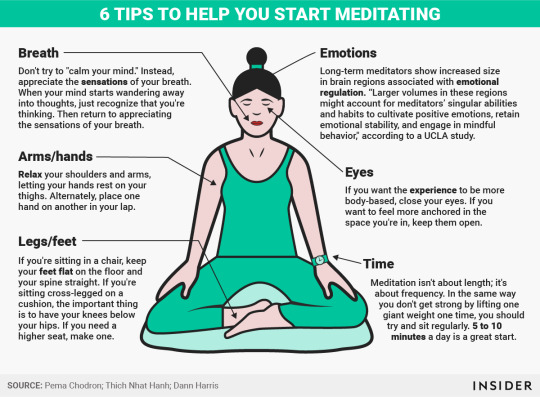
Are you ready to try the practice of mindfulness for yourself? It’s easier to begin than you think.
For starters, remember that everyone has the capacity to change, learn, and grow — no matter what your goals are. Whether you start tomorrow, next week, or right now, the only thing potentially holding you back is yourself and the limitations you create.
Also remember, that if you start a mindfulness practice and you don’t feel anything right away, that’s normal. Mindfulness practice is not like taking a pill. It’s not black and white, and you won’t suddenly become a brand-new person when you start to live more in the present. Instead, you must be patient, trust the process, and keep returning to the practice. Over time, you’ll begin to see small changes at first, then bigger and bigger ones in your life as a whole. The good news is that these changes will only be positive. There are no downsides to mindfulness practice.
In addition, there’s no mindfulness. It’s not something like graduating from college or buying a house. You can’t finish or win mindfulness. However, you can give away mindful gifts to those you feel need some mindfulness in their life.
Wherever you go, there you are? Jon Kabat-Zinn
Fun Mindfulness Interventions Techniques And Worksheets For Adults
There are several ways to engage in mindfulness on an individual level, including worksheets, techniques, and different exercises.
If the idea of participating in group mindfulness exercises is anxiety-provoking or stressful for yourself or your clients, then diving into mindfulness practice alone can be the best way to proceed.
Here are six exercises that can help to build mindfulness in different ways.
Integrating Mindfulness Into Daily Life: Its Easier Than You Think
If you are interested in integrating mindfulness into your everyday life and becoming more mindful in every aspect of your life, the good news is that it’s easier than you think!
In fact, you can teach yourself to be mindful all day, every day if you like. Mindfulness is the practice in Buddhist teaching — essentially everything is mindfulness. The simple goal is to focus on the task at hand with mindful awareness. No matter the task, you stay fully aware and focused. Your attention is entirely on whatever you are doing — whether it’s folding laundry, cooking, playing with your children, working on a report for school, or just taking a walk.
Items you can introduce into your daily life to improve mindfulness includes:
Wijdverbreide Fouten Gemaakt In Een Meditatie Zijn Van Toepassing
Wilt u weten wat de grootste fout is die u samen met uw meditatie maakt? Het is zoals je bent over het. Het zijn ongetwijfeld je overtuigingen rond meditatie die misschien de beste manier zijn, niet de toepassing zelf.
Neem aan dat je het verkeerd doet?
Je gaat ervan uit dat je het niet kunt.
Je gaat ervan uit dat het jaren van solliciteren kost om enig voordeel van bewuste meditatie te krijgen, of aan de andere kant, je mediteerde zodra je het zat bent en je ziet de voordelen nog niet. Je gaat ervan uit dat een winstgevende meditatie betekent dat je geen ideeën hebt. Je gaat ervan uit dat het alleen voor yogi’s, etherische feeënmensen en historische filosofen is. Je gaat ervan uit dat je niet genoeg tijd hebt.
Dit is wat ik je graag wil laten weten:
Ten eerste jij doe het verkeerd omdat er eigenlijk niemand is nadering. In werkelijkheid, zoals we eerder hebben besproken, zijn er een hele reeks meditatieoefeningen en -strategieën. Het gaat erom te ontdekken wat voor jou werkt.
Je hoeft niet elke ochtend een half uur te mediteren. U kunt beginnen met 5 minuten en uw aanpak opwerken. In werkelijkheid kun je beginnen met 5 bewuste ademhalingen. Daar beoefende je gewoon bewuste bemiddeling! Zien? Je bent in staat om het te doen.
Je zult waarschijnlijk een groot aantal ideeën hebben terwijl je mediteert, en dat betekent niet dat je het verkeerd doet.
Is er een One-Measurement-Suits-All-strategie?
Mindfulness Techniques For Depression Anger Addiction And Anxiety


Mindfulness has been a crux of therapy for patients with borderline personality disorder, and it also has applications for people without a diagnosis of mental illness.
People anywhere on the mental health spectrum can benefit from mindfulness techniques. It helps regulate emotions and can be a helpful resource for management and .
How Long And How Often Should You Practice Mindfulness Meditation
You can practice mindfulness meditation for as long or as often as you like. However, 15 minutes a day, a few times per week, is a good start for a beginner. Then you can work your way up to an hour each time, which is when you can reap the most benefits, says Britt Gustafson, a mindful life coach who teaches mindfulness meditation through .
You can practice mindfulness meditation at any point in the day, but it might be helpful to do it at the same time each day to build a routine. For example, Gustafson says she likes to practice every morning before she gets out of bed.
“You’re kind of checking in with yourself and getting yourself aligned. I feel personally that that sets the tone of your day,” Gustafson says.
Some people like to meditate in the evening, in the transition between work and home, Dingle says. You can also reach for mindfulness meditation when you need it, such as before an important event, or when something goes wrong and you want to ground yourself, she says.
Frequently Asked Questions About Mindfulness Meditation Answered
When you’re new to meditation, it’s natural for questions to pop up often. These answers may ease your mind.
1) If I have an itch, can I scratch it? Yes—however, first try scratching it with your mind before using your fingers.
2) Should I breathe fast or slow or in between? Only worry if you’ve stopped breathing. Otherwise, you’re doing fine. Breath in whatever way feels comfortable to you.
3) Should my eyes be open or closed? No hard-and-fast rules. Try both. If open, not too wide, and with a soft, slightly downward gaze, not focusing on anything in particular. If closed, not too hard, and not imagining anything in particular in your mind’s eye.
4) Is it possible I’m someone who just CANNOT meditate? When you find yourself asking that question, your meditation has officially begun. Everyone wonders that. Notice it. Escort your attention back to your object of focus . When you’re lost and questioning again, come back to the breathe again. That’s the practice. There’s no limit to the number of times you can be distracted and come back to the breath. Meditating is not a race to perfection—It’s returning again and again to the breath.
5) Is it better to practice in a group or by myself? Both are great! It’s enormously supportive to meditate with others. And, practicing on your own builds discipline.
7) What if I get sexually . Repeat.
How To Practice Mindfulness In The Age Of Distraction: The Five
1) Timed reminders
Mindfulness reminders that are set up ahead of time on digital devices.
Phone alarms
According to B. Alan Wallace, seasoning the day with a few mindful breaths and body scans will go a long way to strengthening our flow of undistracted non-meditation. When I first read Wallace’s advice I tried it out, but would often forget to follow it. The paradox of practicing mindfulness is that we have to be mindful in the first place to practice it: the moment we realize we are distracted, we are not distracted.
I got around this dilemma by setting up mindfulness alarms on my phone. I downloaded an app called and set 20 alarms, 35 minutes apart.
I set the text to the following instruction:
Whenever I received this timed reminder on my phone, I would open the Calm app and do 1-2 minutes of breath meditation. You can experiment with different apps and use different meditation intervals and lengths. The most important thing is that you take the reminders seriously and follow them no matter where you are or what you’re doing. If you happen to be caught up with something quite engaging, you can at the very least take three deep breaths.
Pomodoro technique
2) Location-based reminders
Mindfulness reminders that are triggered by cues in your environment.
Here you want to link certain locations or landmarks with the act of waking up and paying attention. For example, every time you come to a red stop light while driving, you can take three conscious breaths .
Whats Different About Buddhist Mindfulness Meditation Anything

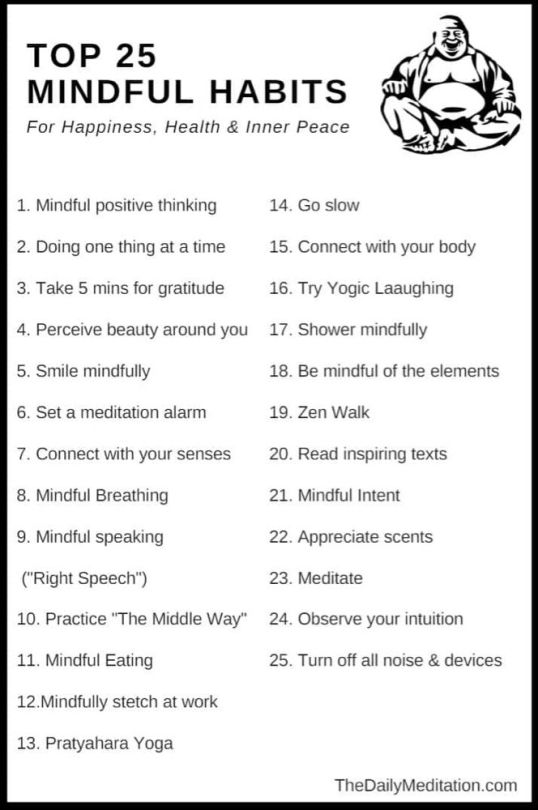
The basis of mindfulness meditation, “Buddhist” or not, is non-judgmental awareness of what we are experiencing in the moment. Sitting and following the breath to keep the mind focused and aware is a very well-known mindfulness method.
What sets mindfulness meditation apart is the importance of motivation and the development of insight or vipassana meditation. Buddhist motivation focuses on liberation from suffering and confusion, and the attainment of freedom. Buddhists generally take a moment before beginning their practice to recall their motivation and express their confidence in the sanity of their journey. After their session has ended, they reiterate their motivation and confidence. In their opening and closing prayers, many Buddhists give voice to their wish that meditation will give them tools to be better able to help others. For Buddhists, the qualities of compassion and discernment are very important and are usually included in these prayers, such as the Four Immeasurables or boundless thoughts. Naturally, you don’t have to be a Buddhist to appreciate the importance of these qualities.
Pay Attention To Your Thoughts Words Actions And Motivations
When you are thinking, saying, or doing something, what is the reason behind it? Are you telling someone a story to benefit them in some way, or is it just benefiting you or your ego? Think about the motivations behind everything you do before you do it to see if it is really necessary. Make sure that you are always coming from a good place when you choose to speak or act in any way.
Mindfulness Improves Memory Concentration And Performance
Paying attention and concentrating on the task at hand may be one of the most important cognitive abilities people have. Mindfulness is one of a very few methods that works as an antidote for mind-wandering and the negative effects that losing concentration may have on you. In fact, research on students has shown that there is a connection between mindfulness and paying attention both in and out of the classroom.
Studies have shown that meditating on a regular basis causes the brain’s cerebral cortex to thicken.
Mindfulness Meditation Reduces Implicit Age And Race Bias
has suggested that mindfulness can positively change the negative thoughts or associations that people once had. The impact of mindfulness has been studied in regards to several biases through measurements of implicit association tests. These tests found that people who listened to mindfulness meditation had an increased state of mindfulness and a decrease in their implicit biases.
How To Practice Mindfulness: 11 Practical Steps And Tips


Developing a mindfulness practice offers myriad positive benefits for the body and mind .
But sometimes, it’s easier said than done.
It’s not easy in the beginning, and there will be bumps along the path toward a committed mindfulness practice.
This article will guide you through various ways and resources to help introduce mindfulness in your life so that you are well prepared to start your journey.
Before you read on, we thought you might like to . These science-based comprehensive exercises will not only help you cultivate a sense of inner peace throughout your daily life, but also give you the tools to enhance the mindfulness of your clients, students, children, or employees.
You can download the free PDF .
This article contains:
References
Tip Six: Introduce A Breathing Exercise Before A Meeting
Up to this point, most of the tips have focused on the role and experiences of the employee; however, there is no reason why everyone in a team should not practice a mindfulness exercise.
There is some preliminary evidence that introducing a three-minute breathing exercise before a stand-up meeting results in better decision making, more productive meetings, better listening, good interactions, and more appropriate emotional responses .
This exercise could be completed as a group or individually before the meeting.
Cmo Practicar La Meditacin Consciente Para La Ansiedad
Final actualizado el 12 de enero de 2021
Este ha sido uno de los años vitales y molestos en el pasado histórico de moda. Aparte de los escritores de ciencia ficción y los consultores de enfermedades infecciosas, ¿quién podría haber imaginado alguna vez que podríamos enfrentarnos a una pandemia mundial en nuestra vida? El nerviosismo es ahora excesivo de todos los tiempos, y es hora de buscar algunos métodos para lidiar con él. La meditación consciente para el nerviosismo también puede ayudarlo a lidiar con todo el estrés inexplorado hacia adelante.
Sin embargo, incluso sin todo el estrés relacionado con una pandemia mundial, la meditación consciente también puede ayudarlo a afrontar con más éxito una gran cantidad de puntos habituales que contribuyen a enfatizar. Estos abarcan las relaciones familiares, los fondos privados, los problemas de salud y todos los diferentes puntos de cada día que tienden a ensuciar un espacio valioso para almacenar en nuestras mentes.
Al final, una cantidad excesiva de estrés puede resultar en nerviosismo, que se reconoce principalmente como un sentimiento intenso, extremo y crónico de miedo y preocupación por las condiciones habituales, por ejemplo, ir a trabajar o divertirse en una reunión social. evento con familiares y amigos. Los signos de tensión pueden incluir cualquier combinación de pánico, carga cardíaca rápida, respiración acelerada, sudoración y sensación de agotamiento o agotamiento.
Simple Ways To Practice Mindfulness In Our Daily Life MindfulnessPositive PsychologySelf-ConfidenceMonique Tallon
“Look past your thoughts, so you may drink the pure nectar of This Moment.”– Rumi
These days as we are all learning to adapt to a new normal of staying indoors, I’ve been personally finding it difficult to focus on what is going right with the world instead of what is going wrong. I find myself sometimes getting sucked into hours of scrolling through my social media feed to read the latest news or to feel more connected to friends and family. With all the unknowns of what the future holds, it’s easy to get stuck in negative feedback loops which ultimately breed stress in the body. And right now stress is the last thing we need if we want to boost our immune systems and keep a healthy mental state.
So in this blog post, I want to talk about how to train your brain through mindfulness practices to stay focused on the positive, lower stress, and keep yourself mentally healthy during this uncertain time we’re going through.
Dedicate Time And Space For Your Mindfulness Practice

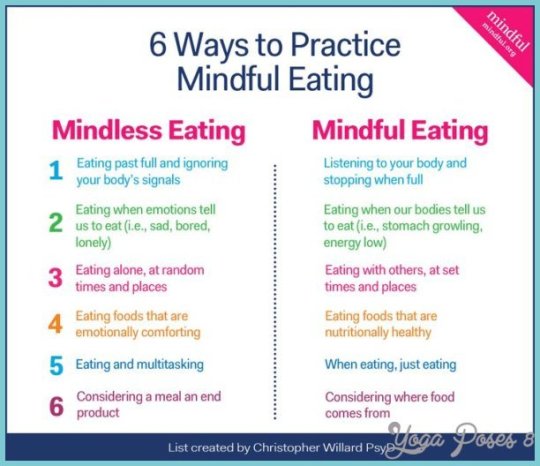
You want the space you choose for mindfulness practice to be quiet, calm, and soothing. You will also want to pick a time during which you are unlikely to be interrupted. Create a space in your house that is peaceful and allows you to just relax while practicing mindfulness. Don’t use this space for anything aside from meditating. This way, when you sit down, your body will be notified that it is time to calm down and practice mindfulness.
Final Note: Only Practicing Mindfulness Is Not Enough
Throughout this article, I have stressed the importance of not over-valuing the time spent during meditation and under-valuing the time spent in daily life. To be clear, this does not mean that meditation should not be practiced. Meditation is an incredibly powerful tool for cultivating wisdom and tranquility, in fact one of the most powerful tools we have.
If you remember earlier, I mentioned the three components of mind training . All three are of equal importance. In my mind, I compare the three components of mind training to living a healthy lifestyle: the approach would be to cut down on damaging lifestyle factors such as smoking and drinking, the practice would be going to the gym and exercising each day, and the integration would be eating a nutritious diet. To live the longest, healthiest life we can, all three components must be taken seriously.
Andy Puddicombe writes:
“Meditation is undoubtedly a vital cornerstone to the practice of mindfulness. To practice mindfulness in everyday life without doing even ten minutes of meditation a day is a bit like trying to build the foundations of a house on loose gravel. It will work, but it will not be anywhere near as stable as if you built it on solid ground.”
What You Need To Know Before Practicing Mindfulness:
You don’t need to buy anything. You can practice anywhere, there’s no need to go out and buy a special cushion or bench—all you need is to devote a little time and space to accessing your mindfulness skills every day.
There’s no way to quiet your mind. That’s not the goal here. There’s no bliss state or otherworldly communion. All you’re trying to do is pay attention to the present moment, without judgment. Sounds easy, right?
Your mind will wander. As you practice paying attention to what’s going on in your body and mind at the present moment, you’ll find that many thoughts arise. Your mind might drift to something that happened yesterday, meander to your to-do list—your mind will try to be anywhere but where you are. But the wandering mind isn’t something to fear, it’s part of human nature and it provides the magic moment for the essential piece of mindfulness practice—the piece that researchers believe leads to healthier, more agile brains: the moment when you recognize that your mind has wandered. Because if you can notice that your mind has wandered, then you can consciously bring it back to the present moment. The more you do this, the more likely you are to be able to do it again and again. And that beats walking around on autopilot any day .
How Meditation Protects The Aging Brain From Decline
A string of recent research suggests regular meditation practice may boost mental flexibility and focus, offering powerful protection against cognitive decline.
Most of us begin to misplace our keys, forget people’s names, or solve math problems less readily as we approach middle age. This is often referred to as age-related cognitive decline. Years ago, scientists believed that this decline was inevitable, but extraordinary research in the past two decades has shown that the adult brain changes with experience and training throughout the lifespan—a phenomenon known as neuroplasticity.
Neuroplasticity isn’t a given. Epidemiological research finds that how a brain ages depends on a number of factors including diet, physical exercise, lifestyle choices, and education. The healthier and more active one’s lifestyle, the more likely he or she will maintain cognitive performance over time. And meditation may be a key ingredient for ensuring brain health and maintaining good mental performance. Here’s what recent suggests about how mindfulness meditation practice may help keep aging brains fit and functional.
The Effectiveness Of Dialectical Behavioural Therapy


In one study, Dialectical Behavioral Therapy-Mindfulness .
What are the “What” skills?
This first set of skills is meant to help the client learn how to:
Simply observe their experience.
Describe their experience using a verbal label.
Be fully present in the moment and in their actions without feeling self-conscious.
These skills allow the client to be aware of what is happening to them and of their part in their own experience. Becoming aware of their own thoughts and grounded in the present forms the foundation for the next set of “how” skills.
How Do the “How” Skills Work?
The “how” skills relate to the goal of teaching clients how to observe, describe, and participate in their own experience. This set of skills is intended to help clients:
Learn to have experiences in a non-evaluative and non-judgmental manner.
Focus on one thing at a time and learn to bring their attention back to the target when they go off course.
Be effective, or keep their focus on their goals regardless of their current mood .
The clients were also taken through a series of other mindfulness interventions including mindful breathing, the body scan, and other simple awareness practices.
Individuals in this study who received DBTM training, in addition to the usual treatment, had enhanced benefits compared to the group who received only the usual psychiatric treatment: the more minutes an individual spent practicing mindfulness, the greater the improvements in psychiatric symptoms .
Practices For Improving Emotional And Physical Well
It’s a busy world. You fold the laundry while keeping one eye on the kids and another on the television. You plan your day while listening to the radio and commuting to work, and then plan your weekend. But in the rush to accomplish necessary tasks, you may find yourself losing your connection with the present moment—missing out on what you’re doing and how you’re feeling. Did you notice whether you felt well-rested this morning or that forsythia is in bloom along your route to work?
Mindfulness is the practice of purposely focusing your attention on the present moment—and accepting it without judgment. Mindfulness is now being examined scientifically and has been found to be a key element in stress reduction and overall happiness.
Mindfulness Activities For Groups And Group Therapy
Group therapy that incorporates mindfulness has shown some promising results. It is as effective as cognitive-behavioral therapy .
There is also evidence that group mindfulness meditation therapy is as effective as individual CBT . In a global climate with few clinical psychologists in relation to the need for them, and in a time when individual therapy time is limited and expensive, the proven efficacy of group-based therapy is great news.
Even if you do not feel a need to visit a therapist, there are mindfulness-focused groups that share and deepen meditation practice . Here are four exercises from such groups.
Mindfulness Helps Students Achieve Academic Success
Everyone knows that, in addition to academic success, people want our youth to be happy and physically well. All of these goals are connected, and we now realize the role that social and emotional well-being has in achieving academic success. Learning how to focus one’s attention on productive tasks, become more self-aware, stay motivated to keep going when work becomes difficult, and deal with the frustrations of learning and communicating with peers are vital skills that depend on a student’s ability to comprehend and manage their emotions.
Researchers have found that college students who learned the craft of mindfulness were able to perform better on the verbal reasoning section of the GRE, and experienced improvements in their working memory. While the emphasis on academic achievement is typically what is highlighted in debates on school reform, important movements are being made by people who take a more complete and holistic approach to education.
The Buddha And The Four Foundations Of Mindfulness

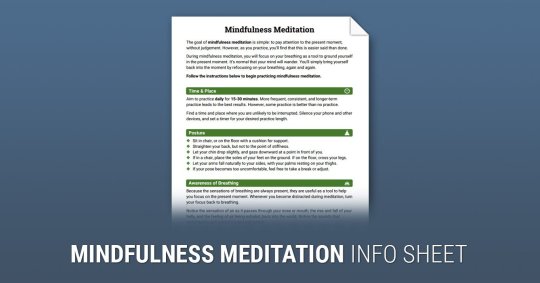
The Buddha — Siddhartha Gautama — called mindfulness “the path to enlightenment.” In order to spread the word of enlightenment, he asked that his senior monks teach a doctrine called The Four Foundations of Mindfulness. When the bhikkhus asked the Buddha which four foundations they were to teach, the Buddha responded4:
Dwell contemplating the body in the body, ardent, clearly comprehending, unified, with concentrated one-pointed mind, in order to know the body as it really is.
Dwell contemplating feeling in feelings … in order to know feelings as they really are.
Dwell contemplating mind in mind … in order to know mind as it really is.
Dwell contemplating dhamma* in dhammas … in order to know dhammas as they really are.
*By , the Buddha is referring to phenomena, or the total of one’s experience, including all mental events that arise within us from moment to moment.
Each of the Four Foundations of Mindfulness is generally to be seen as a of learning to be completely mindful in each and every moment. That is, the first stage is to focus on being mindful of the body. This is often done by simply focusing one’s attention on the breath. From there, the rest of the body is considered, including all sensations.
Notice Sights Sounds And Smells Without Judgement
Do you have a specific taste in your mouth or scent in your nose? Where is the smell coming from? What do you hear? Is it the sound of a truck passing by? The wind wafting through tree branches? Are you talking to someone? Listen to what they are saying, but also think about the timbre of their voice. Look at their face, and notice their skin, the softness of their hair, and how their lips move when they speak. Notice each of these sensations without judgment.
Using The Body And Breath To Get Out Of Your Head
We often practice mindfulness in stillness. Here, Cara Bradley shares how mindful movement and breath awareness can help us shift away from stress.
Mental Health
Welcome to the first article in a new series from Cara Bradley where she will explore how we can use our breath and body to cultivate “mental fitness,” clarity, and calm.
Do you ever feel like a brain on a stick? You know that sensation of being stuck in your head, disconnected from what is happening below the neck? It’s not a comfortable or productive way to live, yet, it’s all too common. In this new series, we are going to take a journey below the neck and explore how paying attention to our body state can help us change our mental state. By refining our awareness of inner body signals, we’ll become more skilled at adjusting how we feel emotionally and mentally—sometimes in a matter of minutes.
Over the course of this series, we will cover body-based practices and protocols to:
1. Make quick mental-state shifts for when we need an on-the-spot solution.
2. Train our body and mind to feel stronger, calmer, and clearer for longer.
We’ll do this with tools and practices for well-being that I call Mini-Wins and Cross-Training. This will help us get mentally fit.
How To Meditate: Simple Meditation For Beginners
This meditation exercise is an excellent introduction to meditation techniques.
Sit or lie comfortably. You may even want to invest in a meditation chair or .
Close your eyes. We recommend using one of our Cooling Eye Masks or Restorative Eye Pillows if lying down.
Make no effort to control the breath; simply breathe naturally.
Focus your attention on the breath and on how the body moves with each inhalation and exhalation. Notice the movement of your body as you breathe. Observe your chest, shoulders, rib cage, and belly. Simply focus your attention on your breath without controlling its pace or intensity. If your mind wanders, return your focus back to your breath.
Maintain this meditation practice for two to three minutes to start, and then try it for longer periods.
After you have found an effective way to meditate, browse Gaiam’s Meditation Shop for all the necessary products to help perfect your meditation techniques.
Mindfulness Reduces Rumination And Overthinking

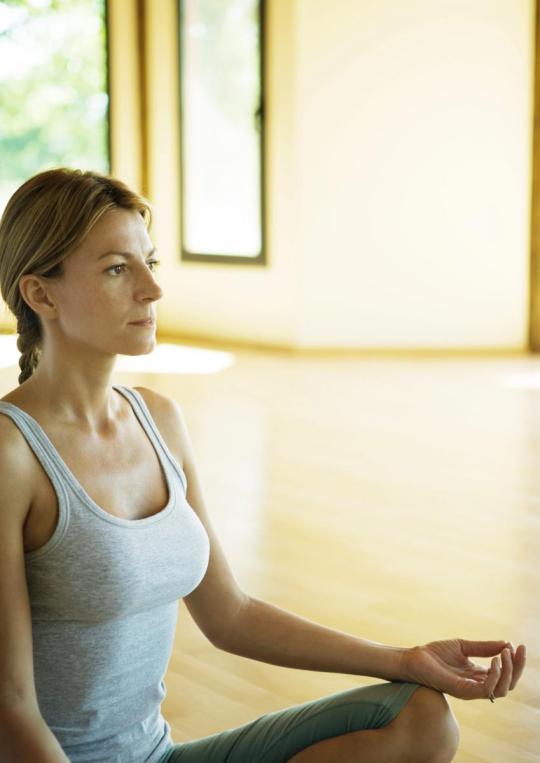
One of the most common symptoms that comes along with anxiety is rumination or overthinking. After you begin to worry about something, your brain will hold onto that tightly and make it difficult to let go. It is easy to get into a thought loop where you continue to replay each and every bad outcome imaginable. We all know this is not useful because worrying about something does not prevent it from happening.
actually showed that people who were new to mindfulness and began to practice it during a retreat were able to show fewer signs of rumination and anxiety than the control group.
More Ways To Be More Mindful In Your Daily Life
1. Learn to watch your mind wander.
Most people see their mind wandering as a bad thing. Daydreamers are considered foolish and unsuccessful. But the truth is that minds do wander, and it’s okay to let them. The key is to rein in your thoughts and teach your mind to notice when it wanders, before returning to the present moment. It’s a freeing experience.
2. Learn to be boring.
People often make the mistake of assuming that their lives need to be eternally and consistently exciting. This feeling is exacerbated by social media, in which we see all of our friends, family members, celebrities, and random other people enjoying exciting activities seemingly every day. FOMO or the fear of missing out is a phrase that refers to the sensation that if you’re not hang gliding, windsurfing, jetting off to Europe, or getting married, you’re not really living life.
This couldn’t be further from the truth. By learning to be boring, you are not accepting a boring lifestyle. You are not telling yourself not to enjoy a fulfilling life. Rather, you are seeing excitement and thrill in the brilliant moments of life. This is a wonderful way to exist.
3. Slow down.
This is a great reminder to write on Post-it notes and keep at your desk, on your refrigerator, or on your bathroom mirror. The two simple words, , help us to remember to take life one moment at a time. Everyone’s life is a journey. You cannot life. Simply take it moment by moment and learn to enjoy the ride.
Ways To Practice Mindfulness Without Meditating
Phrases like “this month flew by” or “where is the time going?” are becoming all too common these days, and they are absolutely linked to the lack of time we take to slow down and be mindful. Mindfulness is essentially the practice of paying attention, on purpose, to the present moment, without judgment. A simple definition for a simple practice; but don’t get the wrong idea, regular mindfulness practice can have some serious positive effects such as improved concentration, energy and sleep as well as increased overall life satisfaction and reduced anxiety.
Mindfulness is most commonly practiced through some form of meditation such as breathing focused activities, focusing on a mantra or guided imagery. However, mindfulness can also be practiced in a more casual way and yield the same benefits. Below are 8 ways to practice mindfulness without meditating.
1. Mindful walking- Mindful walking is an opportunity to focus on the present moment-your feet on the ground, the wind on your face, or the sounds you are hearing- without any judgment. When your mind wanders, simply notice that your mind has wandered and gently return your attention back to your walk.
2. Mindfulness in the shower- Being in the shower provides a strong opportunity to connect with your senses. Try focusing your attention on the smell of your shampoo, the lather of your body wash, or the temperature of the water. Connecting with our senses is a wonderful way to practice being mindful.
How To Practice Buddhist Mindfulness Meditation
To practice mindfulness meditation with a Buddhist slant, begin your session by taking a moment to recall why you’re meditating. What is your motivation? Think about what your goal is and how meditation can help you reach it. Connect with your compassionate, caring heart. Then sit in a posture that supports your practice and settle your mind on the rhythm and feel of your breath.
As you practice, your mind will be distracted by all sorts of ideas – what’s been done, what needs doing, and how you feel about all that. Great! Notice these thoughts and how they vie for your attention, then gently but firmly bring your mind back to the breath.
When you start meditating it often seems like you’re having more thoughts than ever. Don’t panic, and don’t try to stop these wandering thoughts. Just acknowledge their presence and let them come and go without pursuing them further. The goal is to become aware of whatever arises in the mind – whether “desirable” or not. Thoughts are always there, we’re just usually too busy to notice. Thanks to mindfulness, we learn that there’s a powerful alternative to distractedness: awareness. To develop awareness, we train in being present, a few minutes at a time.
Mindworks Team
We’re so sure you’ll benefit we now offer you Mindworks Journey Level 1: Meditation Fundamentals course for Free. Click the link below to learn more.
Notice Thoughts And Emotions Without Judgement

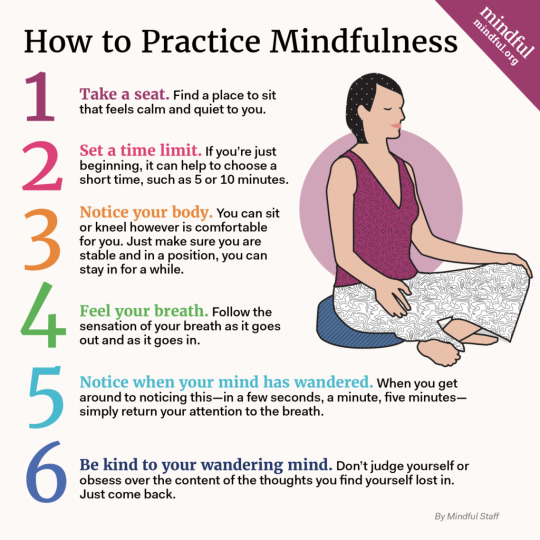
See your thoughts and emotions come and go without judging them. Remember that the goal of mindfulness is not to avoid thinking or feeling anything. You are not trying to cultivate an empty mind or complete clarity here. Your mind will wander, and you should expect that. Simply notice when it does, and tell yourself that it’s happening.
For example, if you find yourself ruminating about yesterday’s meeting with a client, you might say silently to yourself, “thinking about meeting” or “worrying about meeting.” Or, if you all of a sudden, become sad when you remember a fond memory, you might say silently to yourself, “feeling sad about X memory.” If you feel excited about a date you have in the evening, tell yourself, “feeling excited about tonight’s date.” After each of these nonjudgmental statements, return your focus to the breath and the current moment.
A Simple Mindfulness Practice For The Beginner
1. Do only one thing at a time.
2. Be deliberate and slow with your actions.
Don’t rush to get everything folded quickly. This activity is all that you’re doing right now, and it deserves your full attention. Take care with each motion and action. Line up the corners on the towels nicely. Organize your folding into neat stacks of like kinds of towels. Pick off lint and put it into a pile.
3. Enjoy the experience.
Take pleasure in what you’re doing. Are the towels warm and cozy from recently being in the dryer? Feel the warm fibers on your fingertips. Hold them against your cheek. Smell the fresh scent of your laundry detergent. Enjoy stacking all of the towels in a neat and organized pile, all ready for your linen closet.
4. When your mind wanders , simply notice it without judgment, and bring it back to the task at hand.
You will inevitably begin to think about what you’re going to do later that evening, how you should probably buy new towels because they are getting old, or what you’d rather be doing other than folding towels. That’s okay! The goal here is, once again, to simply notice your mind wandering, tell yourself where your mind is wandering to , and bring your focus back to the current moment and what you’re doing: folding laundry.
Mindfulness Is Important How Do We Develop It
Find a mindfulness-based therapist
Cultivating mindfulness is the key to overcoming suffering and recognizing natural : both our own and others’. How do we go about it?
In the Buddhist tradition and in Contemplative Psychotherapy training, we nurture mindfulness through the practice of sitting meditation. There are many different kinds of meditation. For example, some are designed to help us relax; others are meant to produce altered states of consciousness.
Mindfulness meditation is unique in that it is not directed toward getting us to be different from how we already are. Instead, it helps us become aware of what is already true moment by moment. We could say that it teaches us how to be unconditionally present; that is, it helps us be present with whatever is happening, no matter what it is.
You may wonder what good that is. After all, don’t we want to suffer less? Aren’t we interested in tuning in to this natural wisdom, this brilliant sanity, that we’ve heard about? Aren’t those changes from how we already are?
Well, yes and no. On the one hand, suffering less and being more aware of our inherent wakefulness would be changes from how we experience ourselves right now, or at least most of the time. On the other hand, though, the way to uncover brilliant sanity and to alleviate suffering is by going more deeply into the present moment and into ourselves as we already are, not by trying to change what is already going on.
Reasons To Start Practicing Mindfulness Today
At this point, you might think that mindfulness sounds like it requires a lot of effort.
Beginning a mindfulness habit is work, and it will be difficult in the beginning, but this habit will become easier over time and with more practice.
Additionally, mindfulness has numerous positive benefits . The benefits of mindfulness are emotional, cognitive, interpersonal, professional, and practical.
Final Thoughts On How To Practice Mindfulness


If you are new to mindfulness, then try doing it for just five minutes a day until you get the hang of it.
It can help improve your life by reducing stress and negative thoughts, increasing energy and awareness and teaching you how to let go of fleeting negative thoughts.
As a practice that has been around for thousands of years, mindfulness has been very helpful for many people looking to make improvements in their lives.
All you have to do is make the commitment to pick one of the exercises mentioned in the post, read over the simple steps for how to practice mindfulness and then schedule time daily to make it happen.
Next, if you’d like to learn more about mindfulness and meditation, then we have a wide selection of resources on this page. Specifically, here a number of blog posts that you might find interesting:
Common Mistakes Made In A Meditation Practice
Want to know the biggest mistake you’re making with your meditation practice? It’s how you’re about it. It’s likely your beliefs around meditation that are getting in the way, not the practice itself.
Think You’re Doing it Wrong?
You think you can’t do it.
You think it takes years of practice to receive any benefits from mindful meditation, or on the flip side, you meditated once and are frustrated you don’t see the benefits already. You think a successful meditation means you’re not having any thoughts. You think it’s just for yogis, airy fairy folks, and ancient philosophers. You think you don’t have enough time.
Here’s what I want you to know:
First and foremost, you do it wrong because there’s really no one way. In fact, as we mentioned earlier, there are hundreds of meditation practices and techniques. It’s about finding what works for you.
You don’t have to meditate every morning for 30 minutes. You can start with and work your way up. In fact, you could start with five mindful breaths. There, you just practiced mindful mediation! See? You can do it.
You will most likely have a multitude of thoughts while you’re meditating, and that doesn’t mean you’re doing it wrong.
You don’t have to dress up in flowy clothes, burn incense, and chant ‘OM’ if you don’t want to. But feel free to if that’s what you connect with. You can mediate at your desk, in your car — not while driving please — or on your hike.
Repeat after me: Advertising
Is There a One-Size-Fits-All Approach?
How Do I Practice Mindfulness And Meditation
Mindfulness is available to us in every moment, whether through meditations and body scans, or mindful moment practices like taking time to pause and breathe when the phone rings instead of rushing to answer it.
sign up for our newsletter
Get mindfulness meditation practices, research, and special offers from our Mindful community delivered to you.
Mindfulness Helps With Emotional Reactivity
Of all the reasons that people usually have for learning meditation, being less emotionally reactive is typically high on the list. Being mindful or “Zen” equates to rolling with the punches in life and being non-reactive to things that might come your way.
And there’s definitely something to this. Mindfulness meditation has allowed study participants to distance their emotions from upsetting pictures and focus more on a cognitive task, as compared with a control group.
Paso 2: Establecer Una Restriccin De Tiempo

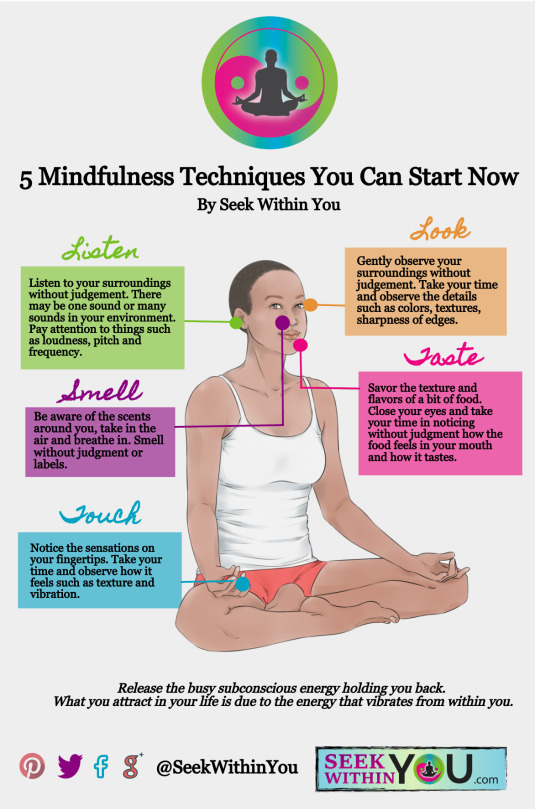
Podrá comenzar trabajando hacia la meditación consciente durante unos 5 minutos al día, simplemente para acostumbrarse a la sensación. Más que sin duda le tomará muchas instancias para entrar en el comportamiento de la meditación. Recomiendo configurar un temporizador para que no tenga que considerar mirar el reloj.
Utilice una notificación blanda que pueda hacer el trabajo sin interrumpir su serenidad, similar a una campana blanda. Luego, esfuérzate por meditar el mismo período de tiempo todos los días. Podrá mejorar la duración de la meditación cuando se acostumbre a ella.
Tips To Practice Mindfulness In Daily Life
As you practice mindfulness meditation, it helps to find ways to bring mindfulness into your everyday life—especially on those days when life is too busy to carve out a minute alone. Mindfulness meditation is one technique, but everyday activities and tasks provide plenty of opportunities for mindfulness practice.
Brushing your teeth: Feel your feet on the floor, the brush in your hand, and your arm moving up and down.
Doing dishes: Savor the feeling of the warm water on your hands, the look of the bubbles, and the sounds of the pans clunking on the bottom of the sink.
Doing laundry: Pay attention to the smell of the clean clothes and the feel of the fabric. Add a focus element and count your breaths as you fold laundry.
: Turn off the radio—or put on something soothing, like classical music. Imagine your spine growing tall, find the half-way point between relaxing your hands and gripping the wheel too tightly. Whenever you notice your mind wandering, bring your attention back to where you and your car are in space.
Exercising: Instead of watching television while on the treadmill, try focusing on your breathing and where your feet are as you move.
Getting kids ready for bed: Get down to the same level as your kids, look in their eyes, listen more than you talk, and savor any snuggles. When you relax, they will too.
Mindfulness Meditation And Other Practices
Mindfulness can be cultivated through mindfulness meditation, a systematic method of focusing your attention. You can learn to meditate on your own, following instructions in books or on tape. However, you may benefit from the support of an instructor or group to answer questions and help you stay motivated. Look for someone using meditation in a way compatible with your beliefs and goals.
If you have a medical condition, you may prefer a medically oriented program that incorporates meditation. Ask your physician or hospital about local groups. Insurance companies increasingly cover the cost of meditation instruction.
Cultivating Mindfulness In Our Daily Lives
Since breaking our addiction to technology is a much bigger task , we need to build practices in our daily lives to bring ourselves back to what really matters. Although nothing beats a good mindfulness meditation it can sometimes be difficult to squeeze in a 20-30 minute meditation in our busy lives. Instead, we can build micro-practices throughout the day to focus our attention.
Introducing Dialectical Behavioral Therapy

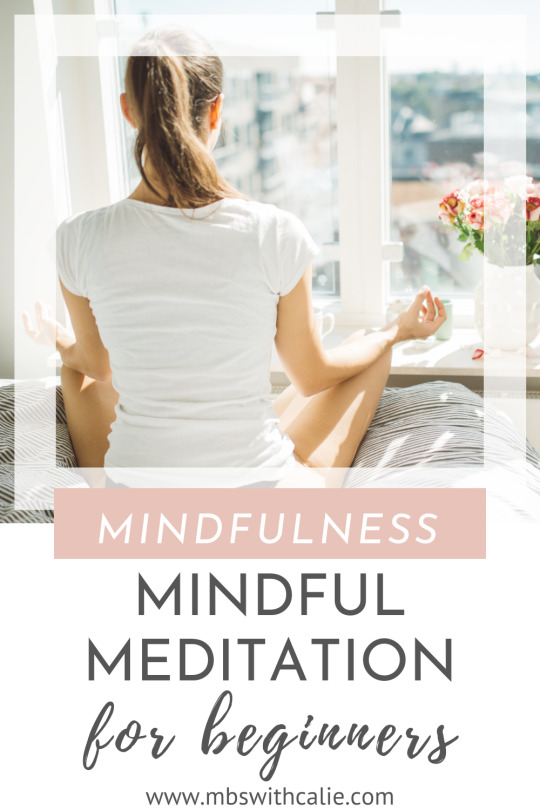
Dialectical Behavioral Therapy is a type of cognitive-behavioral therapy that is mainly used to treat individuals with borderline personality disorders.
Dialectical Behavioral Therapy is characterized by the following steps:
The first priority for DBT treatment is to target the life-threatening behaviors that often manifest in people with severe mental health problems;
Second, therapists aim to eliminate the behaviors that interfere with therapy, such as refusal to strive for the goals of DBT, missing sessions, etc.;
Next, DBT therapists aim to correct the behaviors that interfere with the client’s quality of life, including non-productive relationship behaviors, communication problems, and bad financial decision-making.
Mindfulness is a core skill taught in DBT, as it helps clients gain awareness of their own thoughts and feelings .
Mindfulness Bell Exercise For Five Minutes
In this exercise, you begin by closing your eyes and listening for the cue. When you hear it, your aim is to focus your attention on the sound and continue your concentration until it fades completely. This exercise helps you to keep yourself firmly grounded in the present. You can use the audio below:
Mindfulness Promotes Cognitive Flexibility
One suggests that not only will mindfulness help people become less reactive, it also may give people more cognitive flexibility. People who practice mindfulness appear to be able to also practice self-observation, which automatically disengages the pathways created in the brain from prior learning, and allows information that is happening in the present moment to be understood in a new way.
Meditation also activates the part of the brain that is associated with adaptive responses to stress, which corresponds to a faster recovery to a baseline train of thought after being negatively impacted.
Mindfulness Reduces Feelings Of Loneliness
Being lonely is more than living in a silent house or having a lack of companionship. With time, loneliness can take a toll on the psyche and have a serious impact on one’s physical health as well.
Feelings of loneliness have been linked to an increased risk of cardiovascular disease, Alzheimer’s disease, anxiety, depression, and even a shortened lifespan. This means that it is important to develop effective treatments for those who are living in isolation.
looked at 40 adults and found that meditating for half an hour each day for eight weeks reduced their feelings of loneliness.
What Are Other Ways To Develop Mindfulness

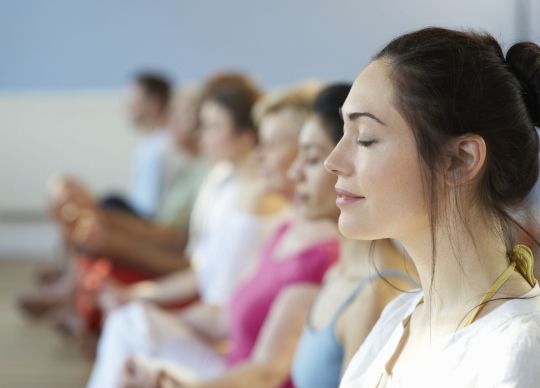
You don’t need to do sitting meditation, there are practices for developing mindfulness in any body posture, such as standing or lying-down. Some people find the body scan meditation a useful way to cultivate embodied attention.
Sometimes you might find moving meditation particularly helpful for settling an active mind. Notice the sensations in your body as you walk—in your legs and feet, arms, chest, and head. As you notice these sensations of walking, you may find it easier to drop the tendency to worry, plan, or ruminate on something that just happened.
Notice Bodily Sensations Without Judgement
Notice how your body feels at the current moment. At what points is your body touching the ground or the chair you’re sitting in? Be aware of the sensation of the material you are sitting or standing on. How do your toes feel in your socks? How do your shoulders feel? Can you notice a rumble in your stomach? Feel the expansion of your abdomen as your lungs inhale. Notice each of these sensations without judgment.
How Meditation Encourages Neuroplasticity
To maintain mental acuity, it’s important to keep what researchers call your neural reserve in good working order. This “reserve” refers to your brain’s mental efficiency, capacity, or flexibility. Emerging evidence suggests that the consistent mental training that occurs in mindfulness meditation may help to keep that “reserve” intact. For example, one review of the evidence linked regular meditation with positive improvements in brain function such as heightened attention, awareness, working memory, and greater mental efficiency.
Studies are showing that daily meditation impacts both brain “states” and brain “networks.” Brain state training involves activating large-scale networks within the brain that affect a broad range of emotional and mental processes. A clever example of this can be found in a recent study published by a group of researchers at UCLA, who reported that experienced meditators have higher concentrations of tissue in brain regions most depleted by aging, suggesting that meditation practice may help to minimize brain age and protect against age-related decline.
Brain network training, on the other hand, is more focal in that it improves specific cognitive abilities by repeatedly activating a network associated with one function, like paying attention. This is equivalent to repetitive mental bicep curls. Both state and network training are believed to be important ingredients for keeping the brain sharp.
Ways To Combine Mindfulness And Gratitude
Mindfulness and gratitude are two tools that work well together. Mindfulness encourages us to focus on the present in a nonjudgmental way, and gratitude encourages us to appreciate things that bring us joy. To foster a habit of experiencing gratitude, we first need to perceive what we are grateful for. To do this, we need to make the time.
One way to combine mindfulness and gratitude is through gratitude journaling. Every day, spend a short period writing down a list of things you are grateful for. This list can include material things, people, thoughts, experiences, or anything else that you can think of.
When writing down the list, spend extra time explaining why you are grateful for that experience and how it made you feel. Do not go overboard – a short sentence will do – but aim to deepen your experience of how you perceived this event.
Another option is to incorporate active gratitude into your mindfulness exercises. For example, mindfulness can help us to perceive negative experiences in a nonjudgmental way.
We can take this experience one step further by incorporating a gratitude element. In a way, we are finding a silver lining in that experience. The intention is not to downplay your feelings of a negative experience; instead where possible, find opportunities for gratitude.
Negative experience
The Three Minute Breathing Space
Mindfulness Meditation for Kids | Breathing Exercise | Guided Meditation for Children
Breath Meditation for Kids | Mindfulness for Kids
Mindful Walking Down The Street Technique

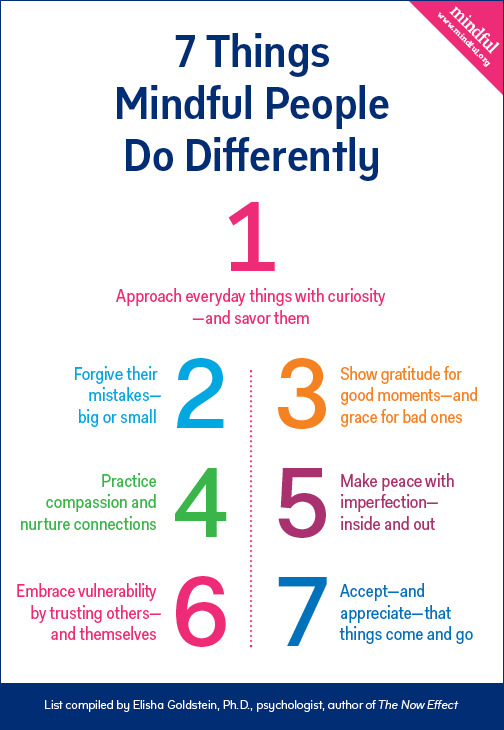
One core process that can be influenced by mindfulness practice is our ability to observe our thoughts, emotions, and sensations without reacting to fix them, hide them, or solve them. This awareness creates room for choice between impulses, and action which can help develop coping skills and positive behavioral change.
In the first step of this intervention, the facilitator helps the client visualize a scenario in which they are walking down a familiar street when they look up and see someone they know on the other side of the street. They wave, however, the other person doesn’t respond and continues to walk right past.
In the second step, the facilitator prompts reflection from the client by asking a series of questions:
1. As you were imagining, did you notice any of your thoughts?2. As you were imagining, did you notice any of your emotions?
In the third and final step, the facilitator asks the client to reflect on the series of emotions and thoughts that came up, how this affects their behavior, whether the exercise was helpful, and for any final comments.
Mindfulness Creates Happier Relationships
Researchers are still unsure this works, but emerging brain studies have shown that people who engage in mindfulness on a regular basis show both structural and functional changes in the brain regions that are linked to enhanced empathy, compassion, and kindness.
Another benefit of mindfulness is in its effects on the amygdala, which is the brain’s emotional processing center. Mindfulness is linked to reductions in both the volume of the amygdala and its connection to the prefrontal cortex. This suggests that mindfulness might support emotion regulation and decrease reactivity, which are two important tools for creating and maintaining relationships.
0 notes